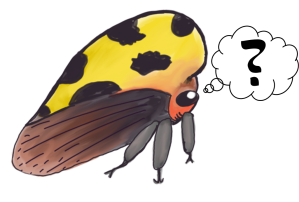Written by Joe Ballenger
October is an important time for spiders. Spiders sleep through the winter, and right about now is when they’re looking for places to hunker down. Consequently, we get a lot of pictures of spiders in people’s houses.
A few days ago, on the Ask an Entomologist Twitter feed, I got someone sending us a tweet of a Yellow Sac Spider. It’s a common species which invades houses at this time of year, so I kind of expect to see pictures of them occasionally.
@_CHIPDOUGLAS @EntsocAmerica That looks like a Yellow Sac spider to me. They’re harmless…so don’t worry about bites. 🙂
— Ask An Entomologist (@BugQuestions) October 21, 2016
This is a Yellow Sac Spider, Cheiracanthium sp. of some sort. Their bites are typically like a bee sting, although there is a wide variety of symptoms. Some people report severe pain which lasts for a couple of hours, there may be a rash, and some people get nauseous. It’s not fun, but it’ll be over in about a day or so…without lasting damage.

Yellow Sac Spider on a finger. Image credit: Andrew Hoffman. License info: CC-BY-NC-ND-2.0
It should be pointed out that these descriptions come from people who were bothered enough to seek medical attention. Given how often these spiders are found in people’s homes, it’s very likely that these symptoms all reflect a worst-case scenario. Compared to a Black Widow, this is pretty mild.
The problem is that a lot of sources say that this spider has a bite similar to the Brown Recluse in that it causes a big wound that festers for weeks. This sort of bite is called a necrotic bite, and that means it makes a lot of dead flesh.
This rumor has made it onto quite a few University Entomology extension websites. Some notable examples include the University of Nebraska, Utah State University, Washington State, and the University of Minnesota. Often times, University extension websites link to one another…like the University of Wyoming website which links to the Utah State University website.
There are some fact sheets, however, which do get it right. The Penn State University website is one of these.
This rumor was addressed in the scientific literature in 2006, by Rick Vetter. Rick Vetter is a bit of a celebrity among entomologists, because he’s made a career of pointing out that spider bites are rarely correctly diagnosed by medical professionals. He’s a professional spider-mythbuster.
In order to investigate whether the bites of Sac Spiders caused necrosis, he formed a group of scientists and they personally investigated as many spider bites as they could. They’d take a call from a poison control center, get the person to collect the spider, and then follow the person’s symptoms as they recovered. He also went through the literature, and looked only at cases where the spider had been collected and positively ID’d.
Of the 40 Sac spider bites where the spider had been collected, only one bite from Europe produced a necrotic wound. The wound was about a quarter-inch across, and nothing like the wounds produced by Brown Recuses. Vetter accepts the wound was from the spider’s venom, although I kind of wonder if it’s an infection.
Regardless, Vetter was eventually able to trace the origins of the myth back to tests run on Guinea pigs. Guinea pigs are known to be more sensitive to spider venom than people are. In this case, the tests run on Guinea pigs weren’t as informative as they should have been. The researchers had been unwittingly working with a model poorly suited to this sort of study.
Doctors who were looking to diagnose patients saw these papers, and noticed some of their patients had wounds which looked similar. Wanting a quick answer, they diagnosed the wound as a ‘spider bite’ and sent the patients on their way. Other doctors saw these case reports, made similar diagnosis, and the whole thing snowballed from there.
In science it’s difficult to prove a negative, but it’s pretty clear that Sac spiders don’t have the same venom as the Brown Recluse. From Vetter’s research, it’s not possible to definitively say that these bites can’t cause necrosis in rare and sensitive individuals…but it’s also clear that comparing their bites to those of a Brown Recluse is not an accurate description of the bite.
Unfortunately, the rumor continues today and has made into University Entomology Extension websites. Typically, they’re good sources of information for bug-related stuff…but even entomologists aren’t perfect.
Works Cited
Vetter, R. S., Isbister, G. K., Bush, S. P., & Boutin, L. J. (2006). Verified bites by yellow sac spiders (genus Cheiracanthium) in the United States and Australia: where is the necrosis?. The American journal of tropical medicine and hygiene, 74(6), 1043-1048.


I’m curious about documentation of the idea that spiders sleep through the winter, and that they seek places to hibernate. It’s a common understanding but I haven’t come across evidence for it yet. Do you have some cites? I always thought most spiders died with the onset of cold weather, especially the wandering males. A second point: do Cheiracanthium spiders enter houses in the fall (in search of sleep or otherwise), or were they always there and are just more visible because they’re sexually mature? Thanks for reading!
LikeLike
These are great questions! And they just seem to be common knowledge. We need more spider research but it’s difficult because they’re not like a pest of anything so a lot of money isn’t being put into spider studies. However, we’ll look into this the best we can in the literature and see what we can find! I wouldn’t be surprised to find that some spiders hibernate where as others die off during the winter.
~Nancy
LikeLike
Pingback: Are brown widows as dangerous as black widows? | Ask an Entomologist